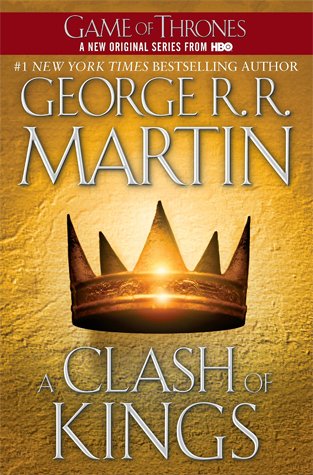A Clash of Kings: A Journey into the Heart of Darkness
When I first picked up A Clash of Kings, I found myself in a compelling tug-of-war between expectation and the unknown. George R.R. Martin’s A Song of Ice and Fire series had already captivated me with its intricate world-building and morally ambiguous characters in A Game of Thrones. After becoming unexpectedly invested in the fates of the Stark family and their adversaries, diving into the second book felt like strapping into a rickety rollercoaster—a thrilling plunge into uncharted territory.
This installment picks up the threads of political intrigue, familial betrayal, and the harsh realities of power. Martin masterfully navigates the complex interplay of characters, introducing new players like Davos Seaworth, while retaining the perspectives from familiar favorites. Readers find themselves reintroduced to Arya, courageously hidden in a boy’s guise, and Sansa, tragically enmeshed in a web of despair. The prose is vivid, immersive, and often unflinchingly brutal; it was hard not to be jolted by the opening scenes of warfare:
“Ashore, the arms of the great trebuchets rose one, two, three, and a hundred stones climbed high into the yellow sky…”
This imagery sets a tone of relentless conflict that reverberates through the rest of the narrative. The stakes are high, and Martin doesn’t shy away from showcasing the grisly cost of political maneuvering—everything from the horrific to the heroic unfolds before our eyes.
As I read, I couldn’t help but appreciate Martin’s narrative style. While the alternating perspectives of nine characters occasionally risked confusion, this structure also offered a kaleidoscopic view of Westeros, allowing us to grasp the broader implications of every decision made. Each character, vividly drawn, offers a unique lens through which we view the chaos of impending war and the relentless quest for power. However, this approach also has its drawbacks; at times, I longed for more direct action rather than hearsay, especially when plot points that could have been electrifying play out off-page.
And yet, just when I thought I had a grip on the pacing, Martin surprises us with a masterful late-inning surge. The final third of the novel is a flurry of activity, reveal, and devastating twists. It transitioned from intricate plotting to dazzling action with an effortless grace. A castle siege, a naval battle, and relentless political intrigue collide in a way that left my heart racing. It’s this ability to turn the tables, to make the stakes feel ever-present and urgent, that ultimately reaffirmed my faith in Martin.
More than that, A Clash of Kings emphasizes the cost of ambition and consequence, as betrayal pulses through every alliance and life. If you enjoy tales filled with unabashed realism, where loyalty is often a fleeting illusion, then this book is undoubtedly for you. Its darker edges will resonate with those who appreciate character-driven narrative that doesn’t shy away from the complexities of human nature.
Reflecting on my reading experience, I walk away not just entertained, but enriched. I might not have intended to carve out a place in the realm of fantasy, yet here I am, enchanted by its intricacies and revelations. For anyone willing to wrestle with a dense, yet rewarding, narrative, A Clash of Kings serves as a powerful testament to how Martin’s world is more than simply a backdrop—it’s a living entity that challenges our perceptions of honor, duty, and survival.
So, if you find yourself alongside me—hungry for epic battles and the twisting pathways of fate—don’t hesitate. Join the fray. The world of Westeros awaits.
[ad_2]
Discover more about A Clash of Kings (A Song of Ice and Fire, #2) on GoodReads >>







